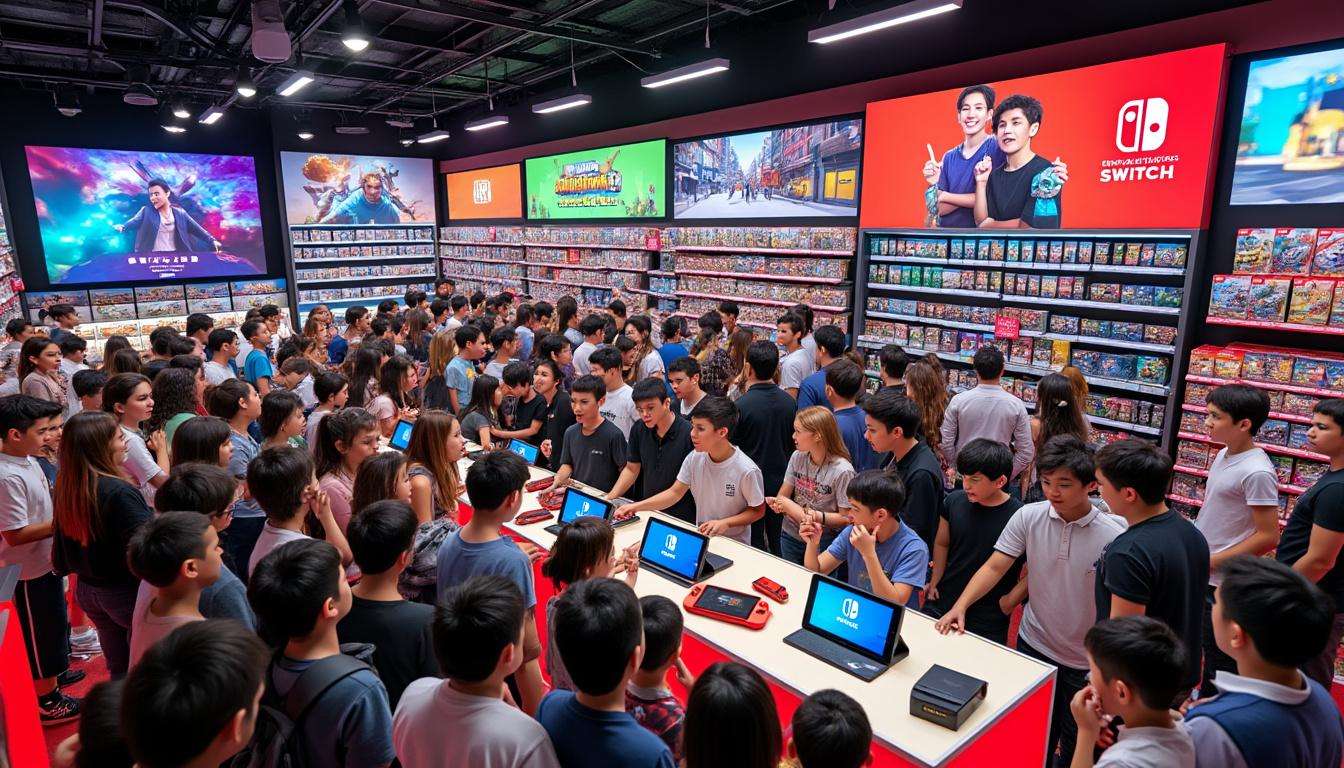The 2025 gaming landscape is brimming with excitement as the Nintendo Switch 2 gears up to launch worldwide, expected to redefine handheld gaming sales records. Market analysts from London-based Ampere Analysis project that this new console will outsell the entire combined lifetime sales of all PC handheld gaming devices, including popular models like Valve’s Steam Deck, ASUS ROG Ally, and Lenovo Legion Go. This forecast not only highlights Nintendo’s enduring brand strength but also paints a fascinating competitive picture against the likes of Sony and Microsoft, who dominate the home console arena. Meanwhile, the handheld PC segment struggles to capture the same consumer loyalty, as revealed by data showing only a small percentage of Switch owners prioritize devices like the Steam Deck.
With analysts estimating sales that could top 15 million units by year-end, the Switch 2 is shaping up to be a dominant force in a crowded market. Its appeal is underpinned by a combination of affordability, portability, and a rich game library supported by major publishers and Nintendo exclusives. As gamers anticipate major releases and fresh ecosystems on competing platforms such as Valve’s Steam Deck or Razer and HP’s gaming laptops, Nintendo’s latest offering is set to capture a substantial slice of handheld and hybrid console sales. This dynamic further intensifies the rivalry among industry leaders and signals a potential shift in consumer preferences towards more versatile, console-grade portable gaming experiences.
Nintendo Switch 2 Sales Outlook: Dominating Handheld Gaming in 2025
Ampere Analysis’s projection about the Nintendo Switch 2 surpassing all PC handheld sales combined shines a spotlight on the shifting dynamics within the portable gaming market. The Switch 2’s worldwide launch is anticipated to generate a massive consumer response, partly because 56% of Steam Deck users also own a Switch, yet only 1.3% of Switch owners consider the Steam Deck their primary console.
- Switch 2 expected sales: 15 million units in 2025
- Combined lifetime PC handheld sales: Less than Switch 2’s forecasted figure
- Key competitors in handheld PC sector: Valve, ASUS, Lenovo, Razer
- Market share insight: Switch holds a dominant brand loyalty exceeding handheld PC rivals
This dominance links back to Nintendo’s strategy of blending home console experiences with portable convenience, a factor the competition finds hard to match.
| Handheld Devices | Lifetime Sales (millions) | 2025 Sales Projection (millions) |
|---|---|---|
| Nintendo Switch 2 | N/A (Launch Year) | 15* |
| Valve Steam Deck | Approximately 2 (estimated) | ~1 |
| ASUS ROG Ally | Under 1 | 0.5 (approx.) |
| Lenovo Legion Go | Under 1 | 0.4 (approx.) |
*Forecast by Ampere Analysis for full-year 2025
Why Nintendo’s Switch 2 Outpaces PC Handheld Consoles
Several factors contribute to the Switch 2’s projected sales advantage:
- Strong brand loyalty cultivated over years of successful hardware iterations and exclusive franchises like Mario and Zelda.
- Affordable pricing compared to high-end gaming PCs or niche handheld PCs from companies like Valve or Razer.
- Hybrid design offering both docked home console and full portable experiences, unlike static handheld PCs.
- Expanding game library with both first-party exclusives and third-party titles, keeping players engaged.
In contrast, handheld PCs grapple with less unified software ecosystems and higher prices, which alienate some consumers despite technological advantages. Meanwhile, Sony’s continuance in the home console race focuses on innovation for the PlayStation ecosystem, while Microsoft pushes the Xbox Series X and its Game Pass as a subscription powerhouse—but handheld gaming remains Nintendo’s turf.
The Competitive Landscape: Nintendo, Valve, and Others in Handheld Gaming
The rivalry in handheld gaming tech has escalated as Valve, ASUS, Lenovo, and HP strive to carve out market share with high-spec PC handhelds. Despite impressive hardware specs from these brands, Nintendo’s seamless user experience and exclusive content create a steep hill to climb.
- Valve: Leading with the Steam Deck, popular among PC gamers but with limited crossover appeal from traditional console gamers.
- ASUS & Razer: Targeting hardcore gamers with powerful hardware and Windows-based versatility.
- Lenovo & HP: Expanding into portable gaming PCs but challenged by form factor and ecosystem limitations.
- Logitech: Providing high-quality accessories that enhance gaming across all platforms, including Nintendo and PC handhelds.
| Manufacturer | Device Focus | Strengths | Challenges |
|---|---|---|---|
| Nintendo | Hybrid handheld console | Exclusive games, portability, affordability | Limited PC-like flexibility |
| Valve | Steam Deck handheld PC | PC gaming library, powerful hardware | Price, weight, battery life |
| ASUS | ROG Ally handheld PC | Gaming-focused specs, Windows OS | Price, niche market |
| Lenovo | Legion Go handheld PC | Good build quality, portability | Software ecosystem, app compatibility |
More on gaming console trends and shifts reflect these market evolutions clearly.
Gaming Ecosystems and Player Preferences Shaping 2025
Game libraries and ecosystem strength play a decisive role in consumer choices:
- Nintendo: Supports a rich catalog including new releases expected for Switch 2, bolstered by exclusives like Hades II on Switch 2 exclusivity.
- Valve: Heavy integration with the Epic Games Store and Steam market, focusing on PC gamers’ needs.
- Sony and Microsoft: Concentrate on home consoles but increasingly push cloud gaming options and game passes.
- Third-party support remains critical across all devices to keep gamers engaged and subscriptions growing.
Decisions by players regarding their primary gaming consoles also illustrate this ecosystem tug-of-war. While high-end PC gaming remains attractive with platforms supported by brands like Acer and HP, many are drawn to Nintendo’s approachable hybrid format combined with stellar game releases. The ongoing evolution in pricing strategies across Sony, Microsoft, and Nintendo will further shape market share throughout the year—efforts detailed in this analysis of Xbox price increases and industry reactions.
